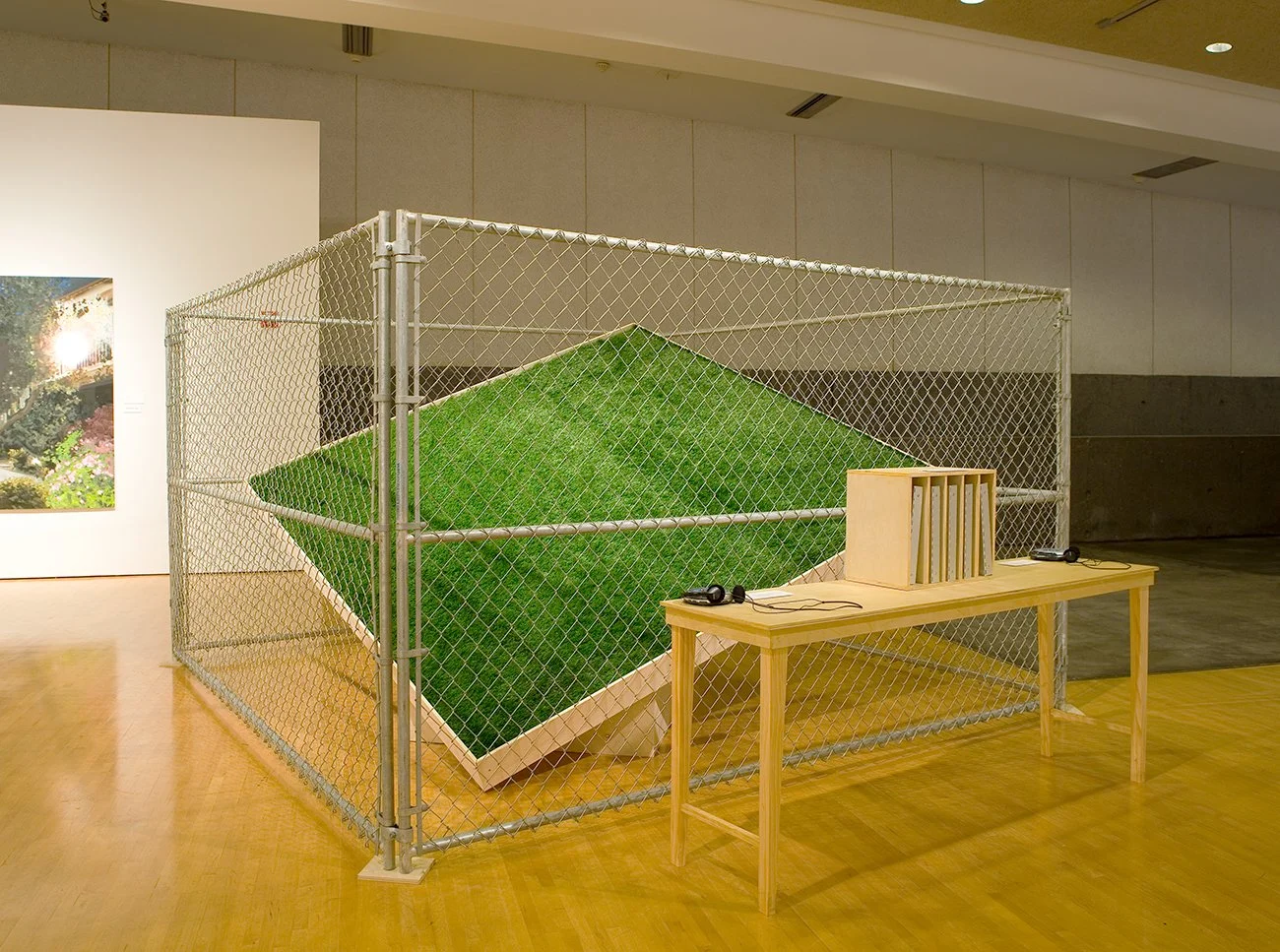Minor Lawn: Hair of Graves Memorial, 2007, plywood, synthetic lawn, galvanized chain-link fencing, 2 chain audio program. Variable Dimensions. Video documentation below. First installed at Phoenix Art Museum with support from Contemporary Forum Artist Grant. The piece was rebuild for the Border Art Biennial in 2010. The audio component is a reading of Walt Whitman’s “Lilacs” eulogy translated by Jorge Luis Borges. The reading is done by the artist’s friends Martha Clark and Kathy Hansen. Clark works as an office cleaner for sculptor, Mark Di Suvero, while Hansen is a court room translator. The artist books feature people reading on their way to work in NY’s subway system.
Opening Space
The border region of the southwestern United States has continuously seen shifts and impositions to its fluid geography. After the events surrounding Sept. 11, the nation was recoiled into further acts of hostility and isolationism towards its boundaries. While the growth of the region continued to skyrocket, voters called for tightened restrictions on immigration hoping to respond to the dangers of terrorism as well as a broadening economic divide. Struggles between federal regulation and local initiative continued to echo historical trends in governing an area that witnesses the intersection of massive economic factors.
These concepts of boundary, intersection, and economy are at the foreground of this memorial. Whitman’s metaphor of grass as the remembrance of death, becomes updated for the grounds of suburban landscape. That space, which is ultimately hyper privatized and revoked from those who construct it, is an extension of cultural boundaries and exemptions. The audio recording for this project was read by Martha Clark, a Colombian immigrant, and Kathy Hansen, a professional translator. Reading a translation into Spanish of Whitman’s Leaves of Grass originally written by Jorge Luis Borges, the poem is redirected into a spirit of co-option. The two versions play simultaneously, situating the listener in between dialogs and language. The performance of this reading is furthered into the sphere of transit and cultural intersection by a series of artist books also presented with the installation. Commuters photographed in transit are seen reading, enacting a subtle network of incorporation and communication. A chain of activity is traced into the space of the gallery as the locus for cultural interpretation and qualification.





